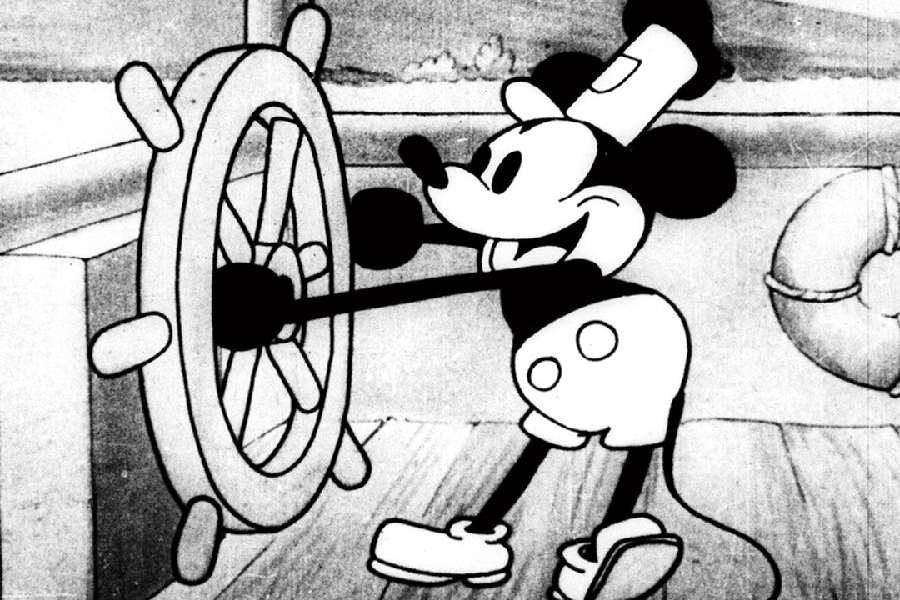Mickey Mouse is now out in the cruel world. Walt Disney’s beloved mouse is known best in his colourful avatar that became an informal symbol of America and is regarded with fascination, attraction and rejection in different parts of the world. But it is the first black-and-white version of Mickey as he appeared in the short film, Steamboat Willie, that has crossed its copyright period of 95 years in the United States of America. Makers of games and films have seized on the icon. Now the old Mickey Mouse is the antagonist in a video game, and the villain in a crime film uses the Mickey Mouse mask. That creators, artists, borrowers, piggy-back riders all have a high old time with classics released from copyright cannot be doubted: the name of the film is Mickey’s Mouse Trap. The strategy here is close to the thrillers in which the criminal uses a clown costume. The deliberate inversion of a lovable figure associated with silliness and fun also brings out the sinister possibilities behind laughter and friendliness. The temptation is almost irresistible — Winnie the Pooh: Blood and Honey was released as soon as A.A. Milne’s Winnie-the-Pooh came into the public domain last year.
The question underlying the phenomenon is simple. Should classics — of any genre — be used for later creative enterprises, as baselines for prequels and sequels, say, or for spoofs and parodies to turn the original appeal inside out, or further works along the same lines in a series, for instance in a crime series in which the new creator imitates the original one perfectly? Bringing works into the public domain allows that legally and creatively; the re-imagined music in Tagore’s songs or new collections of his works are examples of this. But is there a morality here, or merely the alarm of the original copyright-holders at the loss of control over the product? The revenues generated by Mickey Mouse for Disney — the public right over the Steamboat Willie version may not affect this — is one aspect of the answer. The morality, though, if any is to be discerned, may lie in the aesthetic quality of the later versions, not in whether it is an imitation or an inversion. Shakespeare wrote before the copyright regime: have the different versions of West Side Story been good or bad for Romeo and Juliet?
That might be another part of the question. A later work that frankly alludes to the original yet achieves its own aesthetic power might prompt a new look at an old classic while bringing out the deepest secrets of its timelessness. It can, at the same time, reach audiences who would not go to a performance of Romeo and Juliet or read the play, maybe Charles and Mary Lamb’s Tales from Shakespeare at most. How many among the audience of Maqbool would see or read Macbeth?










